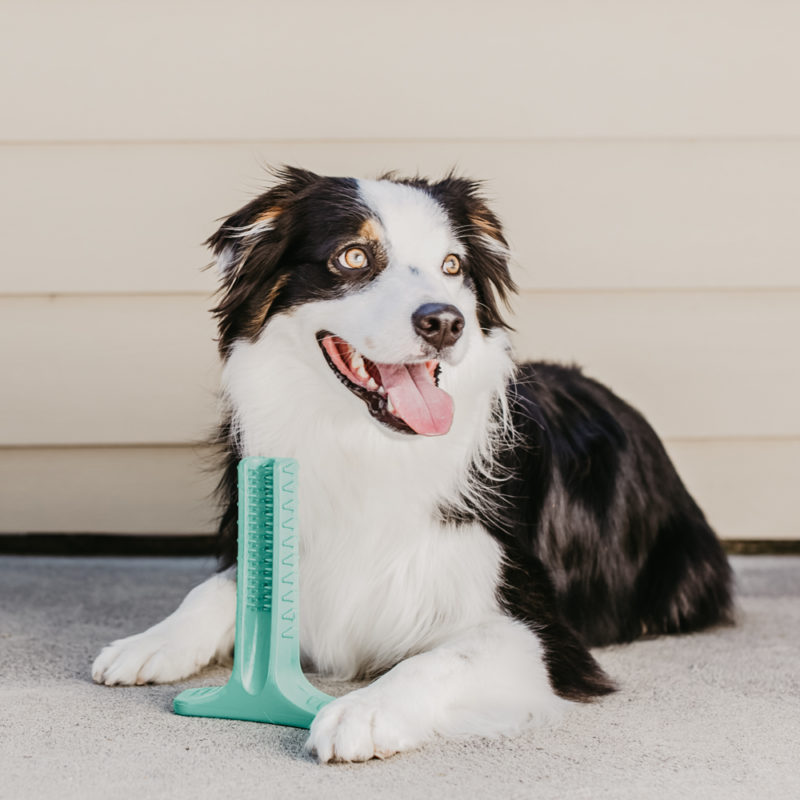
Poor dental care can cause plaque to build up on your dog’s teeth. If it’s not removed with regular brushing, the plaque will harden into tartar. Tartar is porous, and can harbor bacteria that can cause pain, inflammation and redness in your dog’s gums – gingivitis.
Gingivitis is only the first step down the very painful road that is dental disease. Eventually, toxins and bacteria entering the bloodstream could cause complications with organs like the heart and liver, and more periodontal tissue damage.
Smaller dogs are more susceptible because their mouths are so small and their tiny teeth are so close together.
Symptoms of Swollen Gums in Dogs Over
You’ll notice different symptoms as the gingivitis progresses:
Types
Early Gingivitis:
– Plaque and tartar are evident on the teeth
– There is a mild redness of the gums
– Though swollen, the gums are still providing a seal around the teeth.
Moderate Gingivitis:
– The plaque and calculus are now evident under the gum surfaces
– Halitosis (bad breath) is present
– The gums are more inflamed.
Advanced Gingivitis:
– The gums are very swollen with evidence of bleeding
– A recession of the gums has begun, with pockets forming which allow for bacteria to enter under the gum
– The bad breath will now be more odorous.
Causes of Swollen Gums in Dogs
When bacteria forms when the plaque on a dog’s teeth is not removed regularly with brushing, he is susceptible to gingivitis. Minerals in the saliva harden the plaque, which then forms as tartar, and as the plaque and tartar accumulate, the gums begin to recede and swell.
Diagnosis of Swollen Gums in Dogs
Dental disease can progress quickly, so have your dog’s mouth checked out by a vet as soon as you possibly can.
Your vet will ask you for a brief history of the time before you noticed that your dog had a dental issue. They may ask what kind of food you feed your pet and when you noticed the swelling, redness, or bad breath. Also let your vet know if you’ve noticed any changes in your dog’s behavior. They will take a look inside your dog’s mouth and take note of any abscesses and problem areas in the gums. If infection is present, antibiotics will be prescribed to prepare the mouth for a dental cleaning. Blood work will confirm whether your dog has an underlying problem that needs to be addressed.
Treatment of Swollen Gums in Dogs
Gingivitis is a common problem, and typically treated with a thorough tooth and gum cleaning under anesthesia. Your pet will be monitored during the cleaning, and once under anesthesia will have x-rays taken to identify specific problems not seen by the naked eye. If any teeth are fractured, or affected by abscess or gum disease, they may be a source of infection and significant pain to your dog and should be extracted.
Once necessary extractions have been completed, the veterinarian will remove all tartar, and scale and polish the teeth.
Once the cleaning is over your dog will wake up, while being kept warm and comfortable in order to limit stress. If your dog was in pain because of poor dental health, the pain should be gone. Your vet may prescribe medication to keep your dog comfortable as his mouth heals.
Recovery of Swollen Gums in Dogs
Your vet might recommend softening your dog’s food for a little while while his gums are still sensitive. Daily oral care will be the best way to help your dog avoid any more mouth issues. Check out our article on “5 Secrets For Establishing A Successful Tooth Brushing Routine With Your Dog” if you need some tips on getting your dog to tolerate his tooth cleanings.
Consistent daily care, along with regular annual check ups, will ensure your pet has a clean, healthy mouth.

